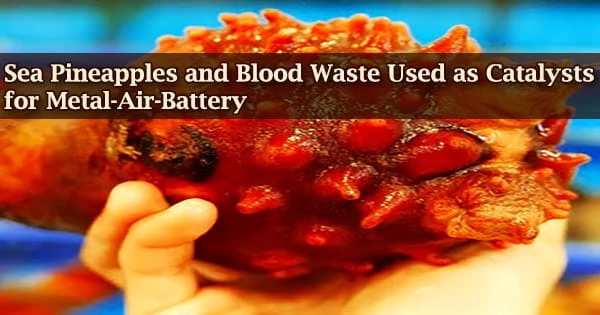In Japan, sea pineapples, an edible ascidian, are a delicacy. The production of sea pineapples, known as hoya in Japanese, is well-known in the Tohoku region.
A study group has now discovered a new application for the thousands of sea pineapple shells that are dumped each year.
The research, led by professor Hiroshi Yabu, showed that carbonizing cellulose nanofibers within sea pineapple shells creates high-quality carbon that, when mixed with blood waste from the cattle industry, has electrical properties comparable to rare metals.
The discovery could be used in next-generation energy devices including fuel cells and metal-air batteries, and it could also be used as an electrocatalyst in water electrolysis systems.
For energy devices, the oxygen reduction reaction is critical. The electrocatalyst in these devices is frequently platinum or iridium oxide, although these are rare-earth elements, making them pricey.
Alternative carbon sources have been investigated by scientists, however they all result in significant CO2 emissions. Yabu and his colleagues have demonstrated that this procedure is both sustainable and metal-free.
Heme iron, nitrogen, and phosphorus are abundant in livestock blood. Regardless, the livestock business dumps thousands of tons of dried blood waste into rivers, lakes, and streams every year.
In Japan, blood waste has been used as a bleaching agent since ancient times. This is due to the adsorption function of carbon and the catalytic effect of the hereto-elemental components.
Hiroshi Yabu
“In Japan, blood waste has been used as a bleaching agent since ancient times,” points out Yabu. “This is due to the adsorption function of carbon and the catalytic effect of the hereto-elemental components.”
Meanwhile, cellulose nanofibers, which are frequently used as polymer reinforcement, have highly crystalline structures that offer them excellent mechanical and thermal properties.
Cellulose nanofibers are typically made from wood biomass, but the researchers used sea pineapples because they, like other marine creatures, have higher crystallinity and generate amazing graphitic shapes when burned to high temperatures.
Before being heated, the blood mass and cellulose nanofibers were mixed together. Powder-like carbon alloys were obtained and examined from there.
Details of the study were published in the journal Science and Technology of Advanced Materials. Yabu is optimistic that the discovery would result in a more environmentally friendly society and a more sustainable future.
“We could utilize two industrial waste products ones that have historically been difficult to dispose of and applied them to produce green hydrogen.”





